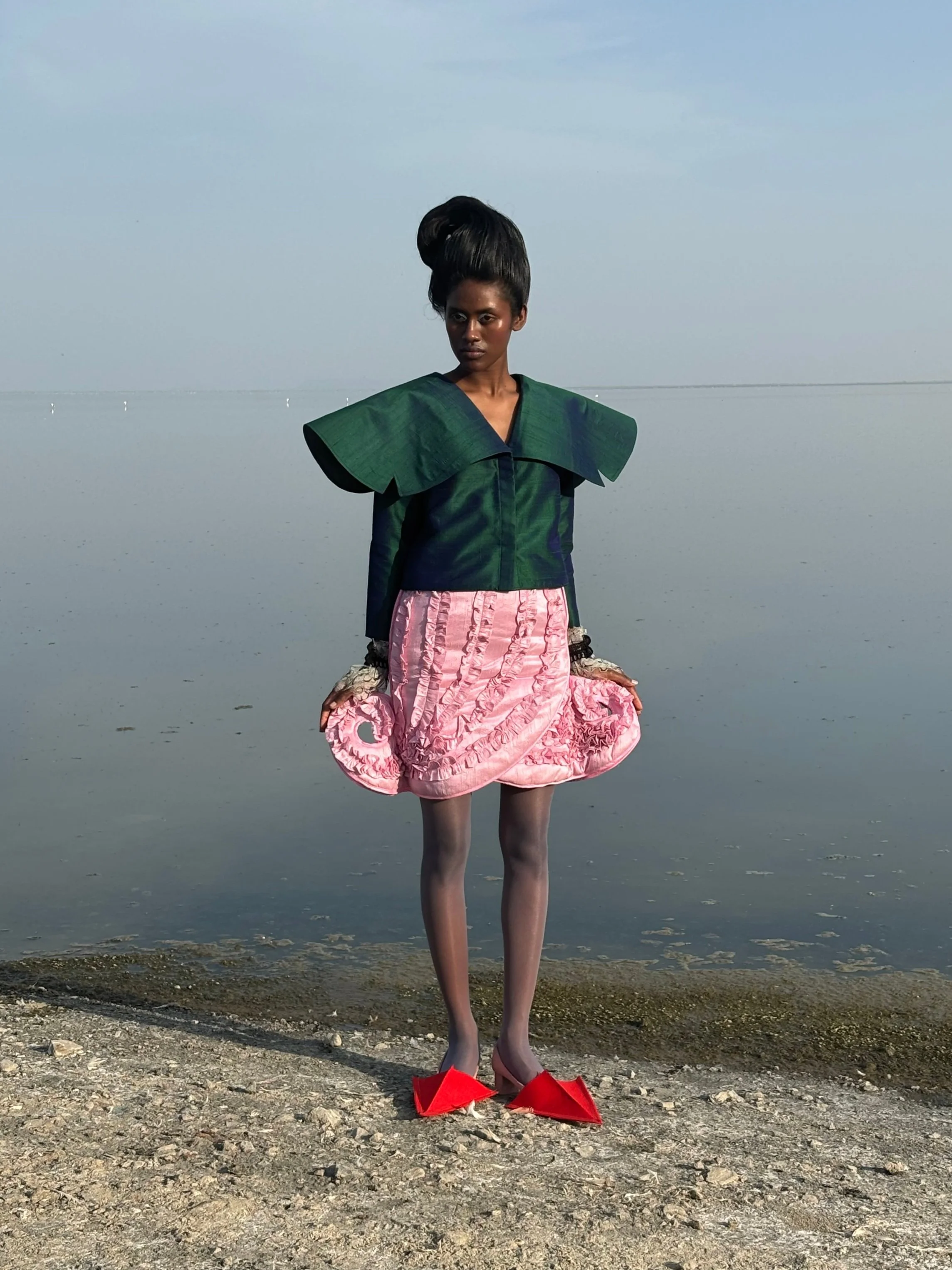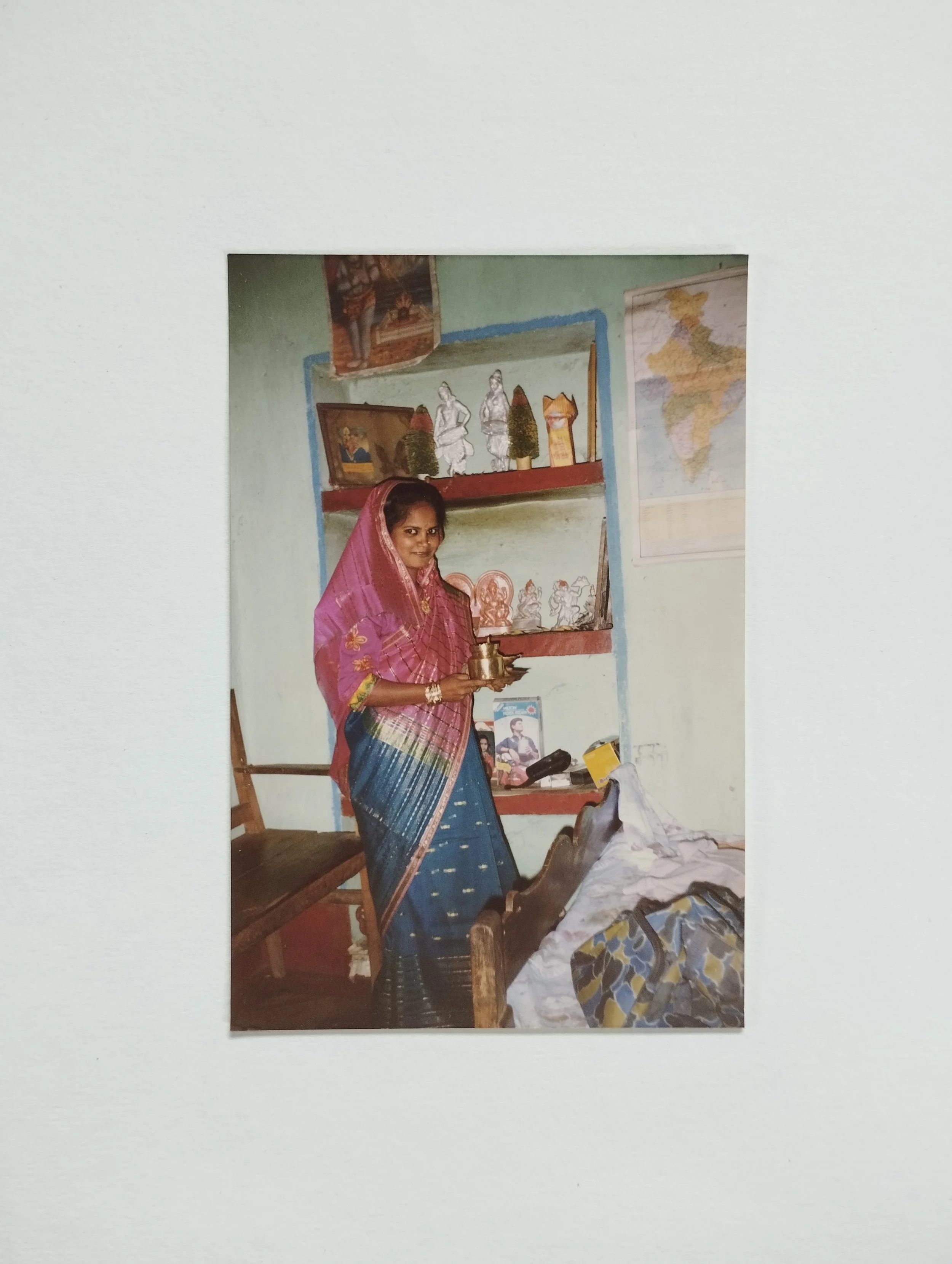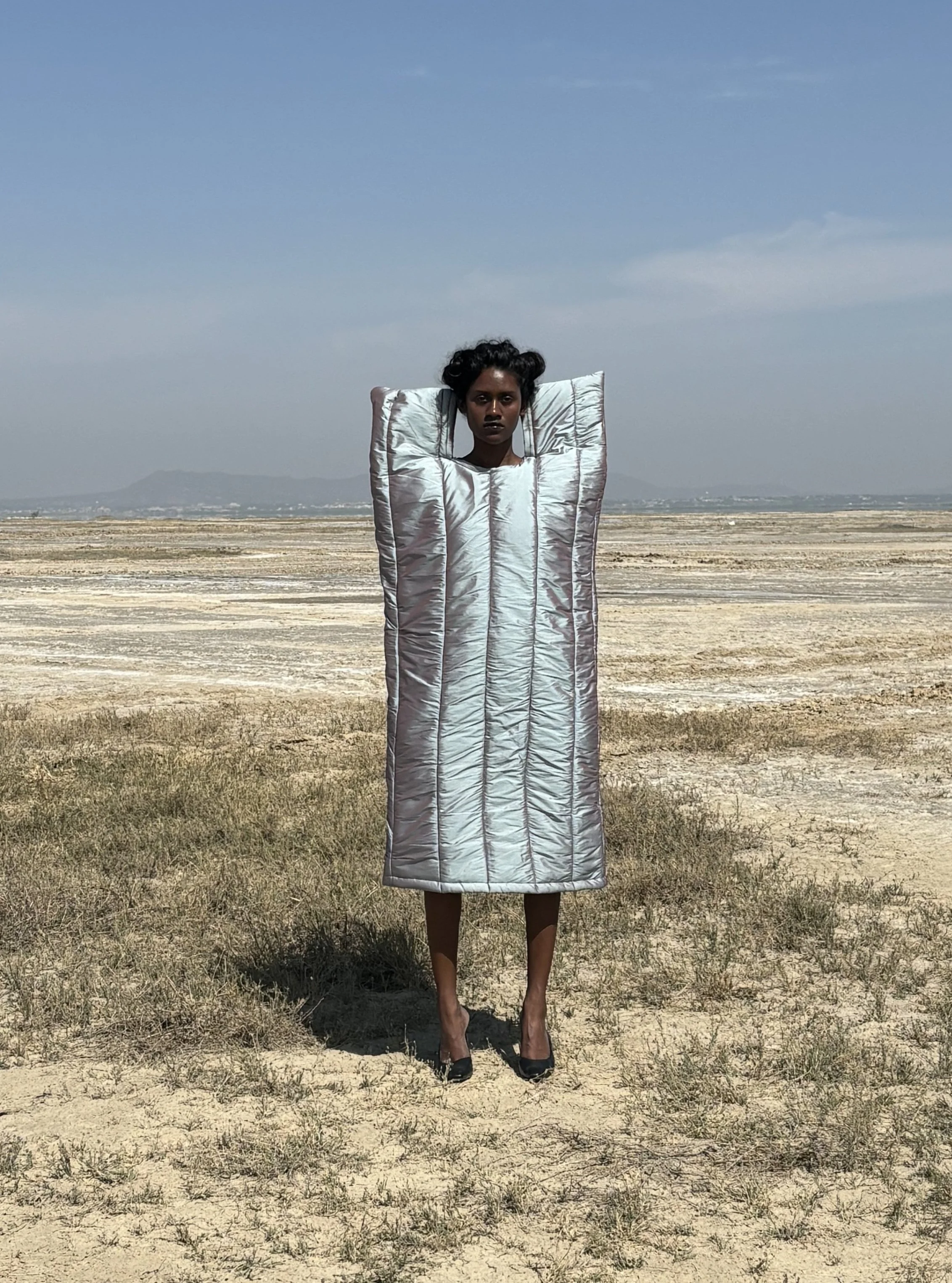Ashish Karmali: A tale of boldness and resilience
Photography Ashish Shah
Fashion designer and visual artist Ashish Karmali celebrates his roots through creating striking silhouettes with the use of upcycling techniques.
Ashish Karmali’s practice is as eclectic as his personal archive of inspirations. Fundamentally a fashion designer, Karmali is also versed in experimenting with styling, sketches, illustration, photography, and visual arts, designing based on whatever speaks to him. Being a multidisciplinary artist, in his words, is a blessing.
Karmali was born and grew up in the district of Ramgarh, part of the Indian state of Jharkhand. He completed his schooling there before joining the National Institute of Fashion Technology (NIFT) in New Delhi, where the 27-year-old is currently based. “While working, my dad had to travel a lot, which made him understand the importance of education. Maybe that’s why my parents have always encouraged me to focus on my studies,” he says. Ready to start a master’s course in fashion at Kingston University in London next September, Karmali’s fashion trajectory has a lot to do with self-discovery. It’s about perseverance, openness, and appreciation for his background and ancestry.
© Ashish Karmali
“I was part of a joint family growing up, so I was always surrounded by women, my grandmother, my cousins, my aunts. I never really understood the meaning of it all until I joined fashion, how important it is to be part of a close-knit family, the importance of togetherness, of being rooted. That’s the core of my inspiration, my home has always been a forever muse to me,” he shares.
Those who see Ashish Karmali’s exquisite creations, impressive use of colour and powerful silhouettes, however, would not guess that he was originally a Science student, a path long left behind due to his proclivity for art.
“Where I come from, people are either looking into the Medical or Engineering fields, and I was also drawn towards that,” he says. “But I never abandoned my love for the arts. Since I was good at it, my tutors also recommended that I try to join an art and design institute [besides a Science one]. I then got to know more about NIFT, applied for its Fashion Design course and luckily got the offer to study there,” explains.
Joining NIFT was a turning point in Karmali’s career, both personally and professionally. Whilst being at university and experiencing life in a new city was a challenge to begin with, mostly due to language struggles and growing up in a small place, he used time wisely to engage with students from other parts of the world, as well as to feel more confident in his skills.
My mother in saree © Ashish Karmali
To improve his fluency in English, the designer became a film aficionado, making visits to the cinema part of his student routine and research process. “During that time, because of social media, I also started to consume a lot of international fashion, to look at the work of other graduates and designers. NIFT also introduced me to Western fashion and culture, and taught me how to look at them. My vision has changed, not only because of university, but also because of my curiosity to learn and grow,” he looks back. “I feel like my main journey started after NIFT, when I finished in 2019.”
More opportunities came along after Karmali’s graduation, such as having one of his looks shortlisted at New Zealand’s World of Wearable Art (WOW) competition, working for textile artist and designer Gaurav Jai Gupta’s brand AKAARO, and with [London-based] designer Ashish Gupta. His season with Ashish Gupta and, therefore, a constant observation of Gupta’s collections for London Fashion Week, he says, opened up his mind to approaching fashion more creatively.
When the COVID pandemic hit in 2020, Karmali once again turned to his heritage, resulting in another important step in his career: “I remember going back home during lockdown. I was with my mum, and she was looking at her old Saris. I asked her to give the pieces to me, and that’s how I made a design with the help of my sisters. The look got shortlisted for an international campaign launch for Byredo’s fragrance, ‘Mumbai Noise,’ shot by [Indian photographer and filmmaker] Ashish Shah.”
Sketchbook © Ashish Karmali
Looking up to the work of both ‘Ashish’s,’ Gupta and Shah, Ashish Karmali gained even more agency over his work, and focused on multiple projects: “I was very happy that I got to work with the Indian brand Raw Mango, to style their campaign. After that, I received a call from Kshitij Kankaria, founder of Dirty Magazine, telling me that the legendary photographer Tim Walker was coming to India and that they would love to shoot my pieces. I felt like it was an opportunity for me to showcase what I feel that fashion should be,” Karmali shares.
Boldness through fabric shapes and silhouettes is a key theme in Karmali’s garments, often influenced by the work of his all-time favourite fashion designer, Rei Kawakubo, and by the idea of an exaggerated maximalist look commonly seen in classic European films. Raised by a woman who learned how to sew on a Pooja machine and used to make clothes for her friends, Karmali’s desire to work in fashion may, however, have already been present before he could even notice it.
“That interest in fashion was maybe in my blood. Once I was working on a sleeve pattern, and my mum came by and told me to change the measurements of it. She then showed me a big box where she kept her diaries. In one of them, she had pattern-making notes with sketches, the other diary showed everything that she had sewn by hand, like little tiny dresses, and the third was about skincare, makeup, and about how you dress when going to a wedding,” he candidly explains. His collection ‘My Mother,’ as the name suggests, is fully dedicated to her, with a few of her old Saris being used to make some of its looks.
Sketchbook © Ashish Karmali
Upcycling techniques and the use of previously discarded fabrics also play an important part in Ashish Karmali’s designs, regularly made with materials sourced from small shops and Indian local markets. This sustainable mindset is not a trend, but a natural result of growing up in a family with a history of sharing clothes with relatives and giving a new life to old garments.
Karmali’s process depends on the final product and intentions behind its development: “I always do my research on materials before making the clothes, to have an idea of how they fit and shape the body, or how they create volume. It’s the fabric that allows me to come up with interesting silhouettes,” explains, describing: “Sometimes I do collages, sometimes I illustrate and sketch, sometimes I drape fabrics, sometimes I watch films. My practice can be spontaneous, and also something that can take a lot of time.”
A combination of his previous designs with a strong collection titled ‘Power of Portraiture’ was transformed into an application to pursue a place at a master’s course abroad. After presenting his work to big industry players, Karmali was offered a chair at the MA in Fashion Womenswear at Central Saint Martins on two different occasions, as well as shortlisted as a finalist to receive a British Fashion Council scholarship, which fell through. “I come from a very small place, so funding [the MA] was a major challenge. But I never lost hope, my desire to go to London didn’t disappear. I was not stopped by what happened,” he says.
© Ashish Karmali
His much-anticipated enrolment at Kingston University was secured after a fully funded scholarship was granted by his home state, as part of a local initiative to support young professionals: “I have seen how difficult it is for people where I come from to understand the real meaning of fashion and the importance of art, so, in the future, if I end up having my brand, I will start from there. The people in India will be the helping hands of my initiative,” he states.
Always aiming towards a fruitful future, Ashish Karmali now wants to make the most of his master’s course and perhaps work for a big house before potentially starting his own business. “Things might take a lot of time, or they might start tomorrow, who knows? I am looking forward to creating more meaningful work. What can be more beautiful than having your original body of work, building your world?” he asks.
One thing is certain: Karmali will carry his home along.








